Search
Did you mean: Copan?
Search Results
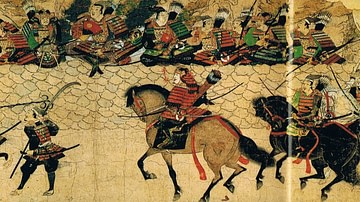
Image
Mongol Invasion of Japan, 1281 CE
A detail showing the failed Mongol attack on the defensive walls of Hakata, Japan in 1281 CE. From the Mongol Scroll, aka the 'Illustrated Account of the Mongol Invasion of Japan.' Commissioned by Takezaki Suenaga, 1293 CE.
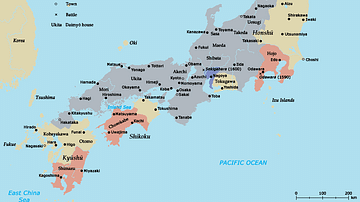
Image
Map of Japan in the 16th Century CE
A map of Japan during the Azuchi-Momoyama period (1568-1600 CE).

Article
Ancient Korean & Japanese Relations
Ancient East Asia was dominated by the three states known today as China, Japan, and Korea. These kingdoms traded raw materials and high-quality manufactured goods, exchanged cultural ideas and practices, and fought each other in equal measure...

Image
Major Temples and Shrines of Japan circa 1200 CE, Kamakura Shogunate
This map depicts all major Buddhist temples and Shinto shrines of Japan around the year 1200 CE. Notice that many renowned temples (such as the famous Kinkaju-ji) have not yet been built at that time. The map highlights the city of Kamakura...

Image
Sea Routes from Ancient Japan to China
A map illustrating possible sea routes used for political and cultural embassies from ancient Japan to Tang Dynasty China.
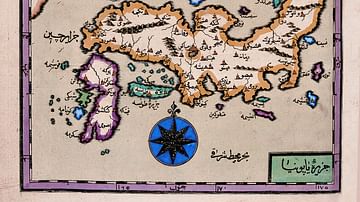
Image
Map of Japan by Katip Çelebi
Map of Japan by Katip Çelebi (d. 1657), geographer of the Ottoman Empire, in his famous geographic dictionary, Kitab-ı Cihannüma (View of the World).
Cambridge University Library.

Image
Agata Shrine in Uji, Japan
The Agata were tribal units under the reign of the Yamato court (c. 300-650 CE), which held sway over western Japan. Particularly in the Nara and Kyoto areas, the agata played important political and ceremonial roles. The name of the Agata...
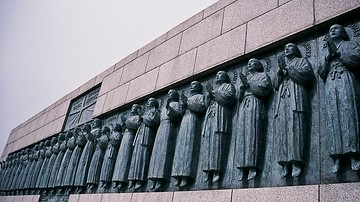
Image
Memorial of the 26 Martyrs of Japan in Nagasaki
Memorial of the 26 Martyrs of Japan in Nagasaki, who were executed for their Christian beliefs in 1597, after Japan had outlawed the religion. Canonised by the Catholic Church, the martyrs were tortured before their execution, with the event...
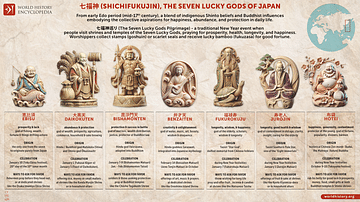
Image
The Seven Lucky Gods of Japan
An infographic about Shichifukujin, or the Seven Lucky Gods (Seven Gods of Fortune) of Japan, a revered group of deities associated with prosperity and good fortune. Each god represents different blessings, including wealth, happiness, and...
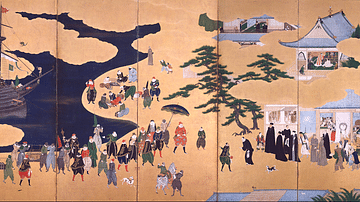
Image
The Portuguese in Japan
A Japanese painted screen by Kanō Naizen showing a Portuguese carrack ship and traders. The Portuguese controlled the trading port of Nagasaki from c. 1571 to 1639. (Kobe City Museum, Japan)